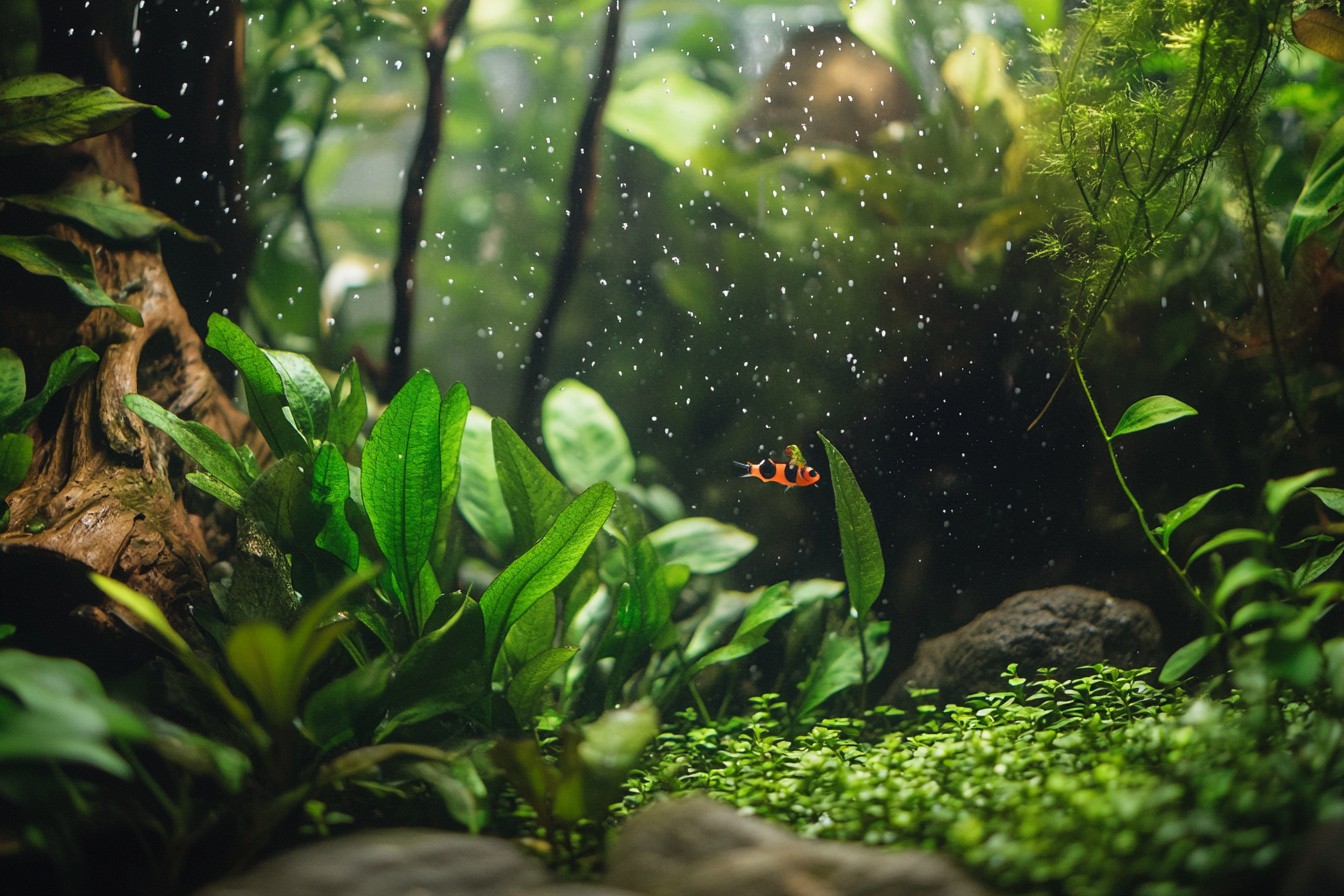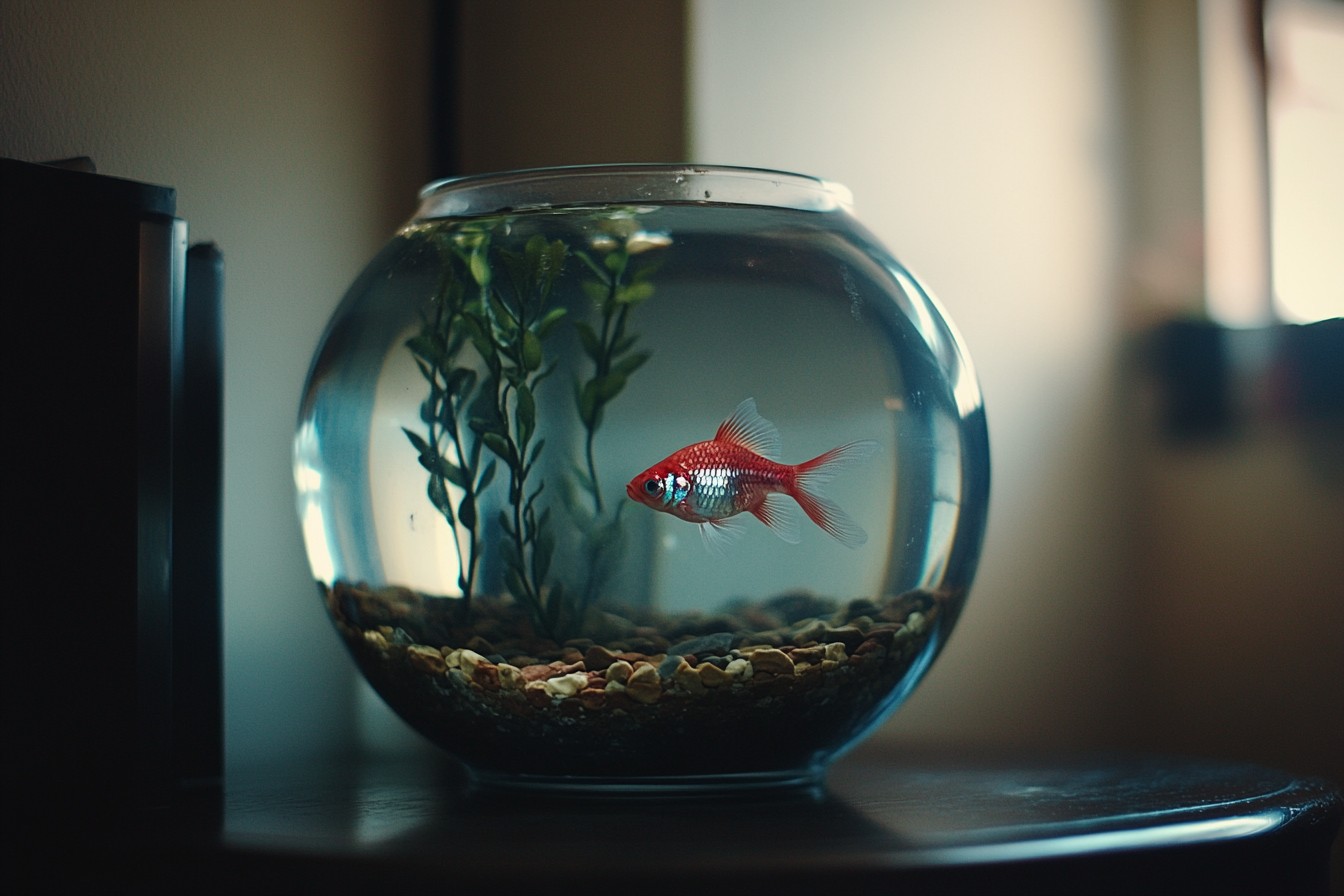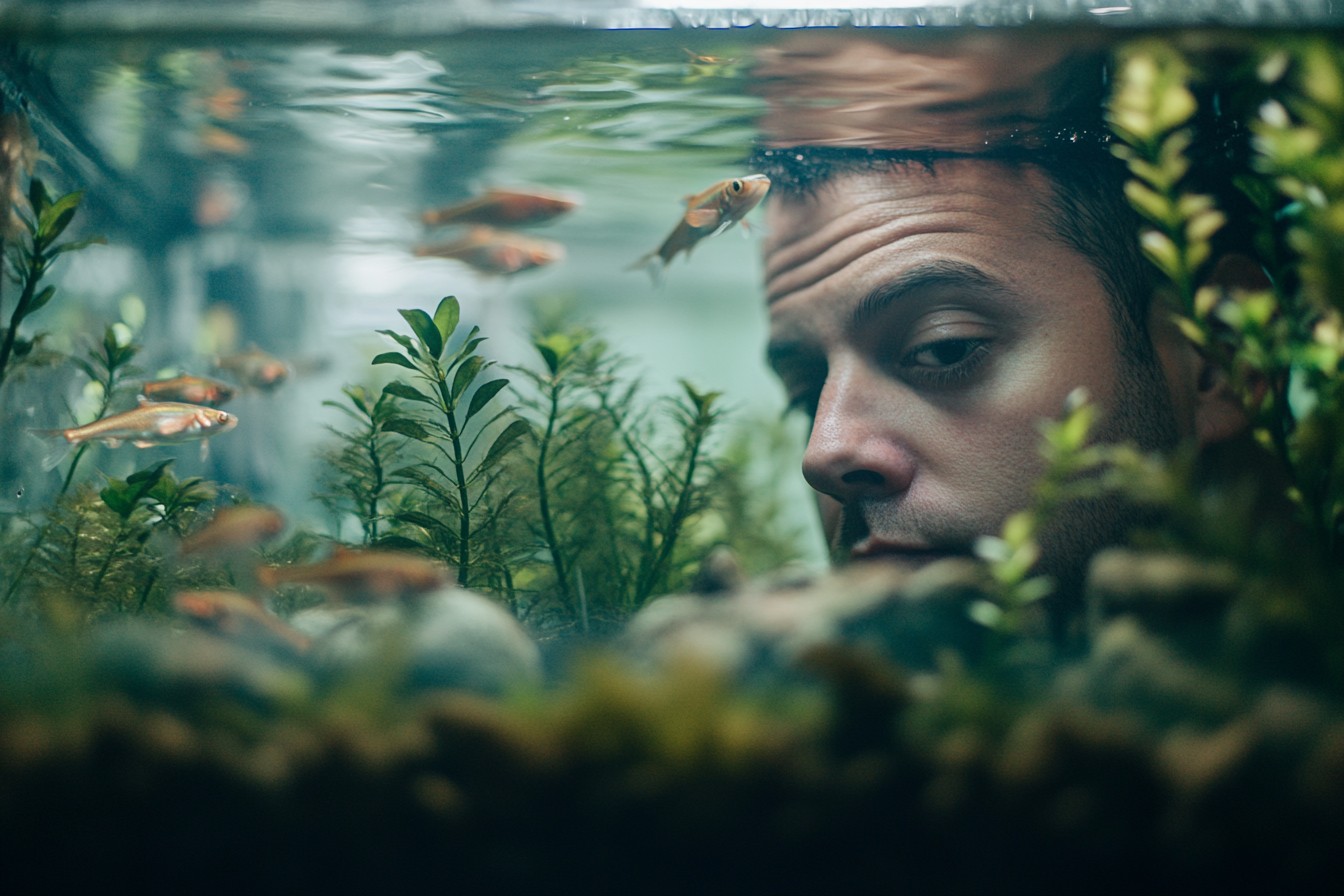The summer after my dad died, I spent approximately three hours a day sitting in front of my 75-gallon planted aquarium. Just… sitting there, watching tetras weave between sword plants, listening to the soft burble of the filter return, tracking cherry shrimp as they scuttled across driftwood.
My roommate thought I’d lost it completely. Maybe I had, a little bit. But those silent hours watching my underwater world helped me process grief in ways that countless well-meaning conversations couldn’t touch.

I didn’t know it then, but there’s actual science behind why I found so much comfort in that glass box of water and life. They’ve even got a fancy name for it now—”aquarium therapy”—though honestly, fish keepers have known about the psychological benefits of our hobby since long before researchers started measuring cortisol levels and brain wave patterns. Let’s talk about what actually happens when you sit in front of an aquarium.
First, there’s the visual aspect. The gentle movement of fish through water creates what scientists call a “mild hypnotic effect.” It’s visually complex enough to hold attention but predictable enough not to be jarring. Studies have found that watching fish activates parts of the brain associated with stress reduction and mood elevation.
One study measured a 12% decrease in blood pressure after just five minutes of aquarium viewing. Five minutes! I’ve spent more time than that staring at a single cherry shrimp eating an algae wafer.
Then there’s the auditory component. The soft, consistent sounds of moving water—bubbles rising, filters returning flow, maybe an air stone gently churning—create what acoustics experts call “pink noise.” Unlike white noise, which contains equal energy across all frequencies, pink noise emphasizes lower frequencies that our brains find particularly soothing. It’s similar to rainfall or gentle waves—sounds that have calmed humans since, well, forever.
I’ve noticed this effect is particularly strong with open-top tanks. My rimless 60-gallon has a lily pipe outflow that creates this perfect gentle rippling sound that practically screams “take a deep breath and chill out” to my nervous system. When my anxiety’s running high, I’ll sometimes perch on the couch near this tank, close my eyes, and just listen for ten minutes.
Works better than those meditation apps I’ve tried and deleted at least twenty times. The hobby itself—not just viewing the end result—offers therapeutic benefits too. Setting up and maintaining an aquarium requires patience, planning, and attention to detail.
You can’t rush cycling a tank. You can’t force plants to grow faster. You learn to work with natural processes rather than against them.
In our hyper-connected, instant-gratification world, this kind of slow, methodical activity provides a counterbalance that many of us desperately need. I remember setting up a blackwater tank during a particularly stressful period at work. Every evening, I’d come home and spend an hour or two working on it—testing parameters, adjusting tannin levels, rearranging botanicals.
The project took weeks, but those focused hours pulled me out of rumination about work stress and into a state that psychologists call “flow”—complete absorption in a moderately challenging task. Flow states are strongly associated with increased happiness and decreased anxiety. For me, water changes have become almost meditative.

There’s something deeply satisfying about the simple physical routine—filling buckets, siphoning gravel, pruning plants, wiping glass. It’s both mindless and mindful, if that makes any sense. My brain can settle into the rhythm of the task while my hands stay busy.
Some people get this from gardening or woodworking; I get it from aquarium maintenance. Different strokes, same mental health benefits. The responsibility aspect of fishkeeping also contributes to well-being.
Having living creatures that depend on you creates purpose and routine. During one particularly brutal depressive episode in my early twenties, my fish tanks were sometimes the only reason I got out of bed. I might not have cared about feeding myself, but I was going to make sure those damn tetras got their frozen bloodworms.
Creating that external obligation to care for something else ultimately helped me begin caring for myself again. I’m not alone in discovering the therapeutic potential of aquariums. Hospitals and dental offices haven’t installed fish tanks just for decoration—research shows patients in rooms with aquariums request less pain medication and experience less pre-procedure anxiety.
One study found that Alzheimer’s patients who ate meals in dining rooms with aquariums consumed more food and showed decreased physical aggression. Children with ADHD demonstrate longer attention spans when therapy sessions take place near aquariums. My friend Mark, who runs a high-stress startup, installed a massive 180-gallon reef tank directly behind his desk.
“It’s not a luxury,” he told me when I commented on what must have been a five-figure setup. “It’s infrastructure for my mental health.” He schedules ten-minute “reef breaks” between difficult meetings—just swivels his chair around and watches clownfish dart through anemone tentacles instead of checking email or social media. His blood pressure numbers tell him it’s working.
Of course, the irony of aquarium keeping is that it can also be a source of stress, particularly when things go wrong. I’ve had my share of 2 AM water leaks, mysterious fish deaths, and algae blooms from hell. During a particularly nasty cyanobacteria outbreak in my discus tank, my then-girlfriend found me sitting on the bathroom floor at midnight, sobbing while scrubbing decorations with a toothbrush.
“I thought this was supposed to be relaxing,” she said. Fair point. But even those challenges offer psychological benefits if approached with the right mindset.
Troubleshooting aquarium problems builds resilience and problem-solving skills. You learn to be methodical, to change one variable at a time, to observe closely, and to be patient with results. These are valuable skills that transfer to other areas of life.
I’ve literally caught myself thinking, “Approach this like an ammonia spike” during work crises, breaking down a seemingly overwhelming problem into manageable steps. The social aspect of the hobby provides another wellbeing boost. Humans need community, and fishkeeping connects you with others who share your particular brand of obsession.
Some of my closest friendships have developed through local aquarium clubs, online forums, and fish store conversations. There’s something beautifully equalizing about the hobby—I’ve exchanged plant cuttings with everyone from college students to corporate executives, all of us temporarily forgetting our differences as we geek out over carpeting plants or breeding strategies. This community aspect became particularly vital during the pandemic lockdowns.

When in-person gatherings became impossible, aquarium forums and social media groups exploded with activity. People shared tank updates, troubleshooting advice, and virtual tank tours. For many, including myself, these connections provided crucial social interaction during isolation.
I did more aquascaping during those strange months than ever before, partially because I had the time, but also because sharing the results online created connection when it was otherwise scarce. I’ve also noticed that tanks have a way of facilitating difficult conversations. When my nephew was going through a rough time as a teenager, our most meaningful talks happened while maintaining his 29-gallon community tank.
Something about the side-by-side activity, eyes focused on the task rather than each other, created space for him to open up. We could talk about hard things amid the neutral territory of water changes and algae scrubbing. For parents, aquariums offer unique opportunities to teach children about responsibility, biology, chemistry, and ecological relationships.
My friend’s daughter struggled with science until they set up a small tank in her room. Suddenly, the nitrogen cycle wasn’t just homework—it was directly relevant to keeping her cherry shrimp alive. Her grades improved, but more importantly, so did her confidence in her ability to understand scientific concepts.
So how can you maximize the therapeutic benefits of your own aquatic setup? First, position tanks in spaces where you’ll actually see them during your daily routine. That gorgeous reef in an unused spare bedroom won’t provide much benefit.
My most therapeutic tank sits directly across from my work-from-home desk, positioned so I can glance up during video calls or between tasks. Consider the specific type of setup that might address your particular needs. High-energy people might benefit from the methodical demands of a planted tank or reef, while those dealing with anxiety might prefer a simpler, low-maintenance setup that provides viewing benefits without additional stress.
My simplest tank—a 20-gallon with white sand, a few smooth stones, and a small school of green neon tetras—often proves most calming precisely because there’s less visual complexity to process when my brain already feels overloaded. Schedule intentional viewing time. This sounds ridiculous—scheduling time to stare at your own aquarium—but in our distraction-filled lives, making deliberate space for this passive activity matters.
I’ve literally put “tank time” on my calendar for 15 minutes after particularly stressful recurring meetings. It’s not about the tanks needing attention; it’s about me needing their particular brand of therapy. Embrace the maintenance rather than seeing it as a chore.
Approach water changes and glass cleaning as opportunities for mindfulness rather than items on a to-do list. I’ve started leaving my phone in another room during tank maintenance, removing the temptation to multi-task and allowing the activity to become truly immersive. Finally, connect with others who understand.
Whether through local clubs, online communities, or just dragging your confused but supportive friends over to look at your new cory catfish, sharing the hobby multiplies its benefits. Some of my favorite evenings have been spent with fellow fish nerds, discussing water parameters and fish behavior with an enthusiasm that would baffle outsiders. Aquarium keeping won’t solve all your problems.
That 75-gallon didn’t bring my dad back or fast-forward through grief. But it gave me a quiet space to sit with difficult feelings, an unchanging point of focus during turbulent times, and a reminder that life continues in its magnificent, ordinary way even when our human worlds feel shattered. There’s profoundly good medicine in that glass box, available without prescription and with remarkably few side effects.
Just watch out—the condition known as Multiple Tank Syndrome has no known cure, and treatment options are limited to “buying larger tanks” and “convincing reluctant partners that yes, we absolutely need another one.” Consider yourself warned.




